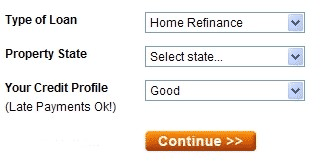Second - Vacation Home Mortgage

A mortgage for a second home or vacation home is fairly similar to getting a mortgage for your primary residence. One of the biggest similarities is the rate. It is the same as the rate you would get for your primary residence.
An investment property mortgage is much more expensive because it has an add on of 1.75 to 3% of your loan amount which you can pay at close or increase the rate to pay. For more on investment properties click here.
Note: Read Our Top Five Mortgage Complaints!
As you may have guessed, they have some rules on these so we all don’t go out and buy “second homes” (getting lower rates and costs than investment mortgages) when we are really going to rent them out.
An April 2013 article in CNNMoney says vacation home sales were up in 2012. “Sales of vacation homes were up 10.1% last year, accounting for 11% of all home sales, according to the National Association of Realtors. The surge in demand helped lift median vacation home prices by 24% year over year to $150,000.”
Requirements
A second home mortgage, or vacation home as they are also known, is defined as a home you live in part of the year. There are differences between the Fannie Mae second home and the FHA second home. The Fannie Mae second home is also considered a vacation home but the FHA second home is not a vacation home at all.
A little confusing but here are both mortgage guidelines.
The Fannie Mae requirements are as follows:
The second home must has to be a reasonable distance away from your primary residence.
You must occupy the second home for some part of the year.
It can’t be used as a rental or a timeshare.
You can’t have an agreement that a management firm has control over the occupancy of the property.
It has to be a 1 unit dwelling.
You have to be able to occupy the property year round.
You are the only one with control over the property.
The FHA requirements are as follows:
The home can’t be a vacation home at all or used for any recreational reasons whatsoever.
You must need to purchase a second home because of seasonal employment or employment relocation.
There has to be lack of affordable rental housing in the area or within reasonable commuting distance of your employment.
You will have to document the lack of rentals, the need for a second home, and get a letter from a local real estate agent verifying there is no affordable rentals in the area.
Down Payment and Loan to Value
A second home mortgage requires a little more down that a primary residence. But, less than an investment. You have to put 10% down to buy. If you refinance and don’t take any cash out, the loan to value has to be 90% just like the purchase loan. If you take cash out, you are capped at 75% loan to value.
For FHA to buy, you have to put 15% down.
The automated underwriting may ask for reserves also. The minimum reserves are 2 months PITI but it may ask for more.
Just remember, this isn’t the mortgage you use when you want to get around the investment property issues. The underwriters are going to look carefully at where this second home or vacation home is.
If it is 15 minutes from your house, I think you’ll have some explaining to do.
It has to fit with you in one house part of the year and in another the other part.
And you will have to document the FHA second home is because of a hardship with your employment.
But the good news is vacation homes are at a discount right now. Check out this article on winter vacation hotspots with huge discounts.
Good Luck!
Author: Terri Ewing
Previous Post: « What Mortgage Can I Afford?
Next Post: » Loan Modification Scams - 5 Steps To Protect Yourself
More Related Posts:
Did you like this post?
If so, please consider leaving a comment below or subscribing to the RSS feed to have future articles delivered to your feed reader or delivered by email.




Leave a Reply